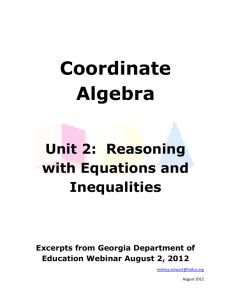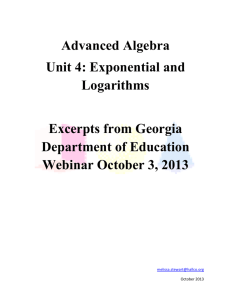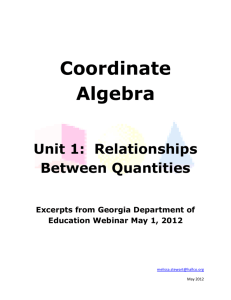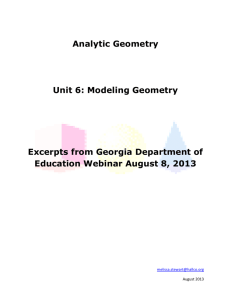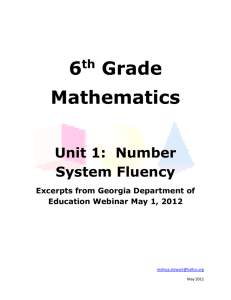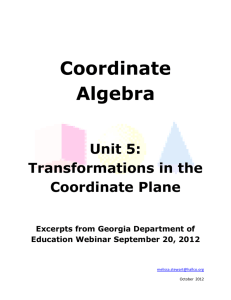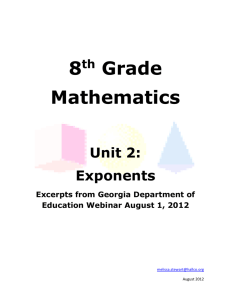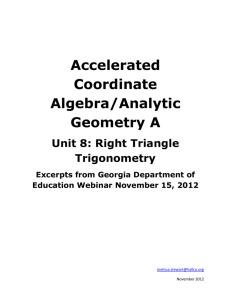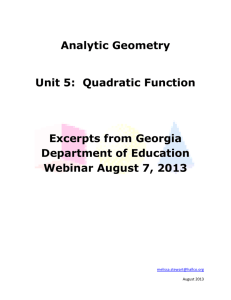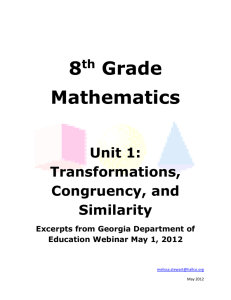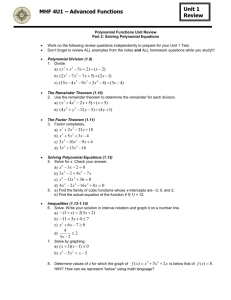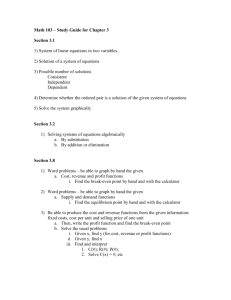Parent Unit 2 Guide for Advanced Algebra
advertisement
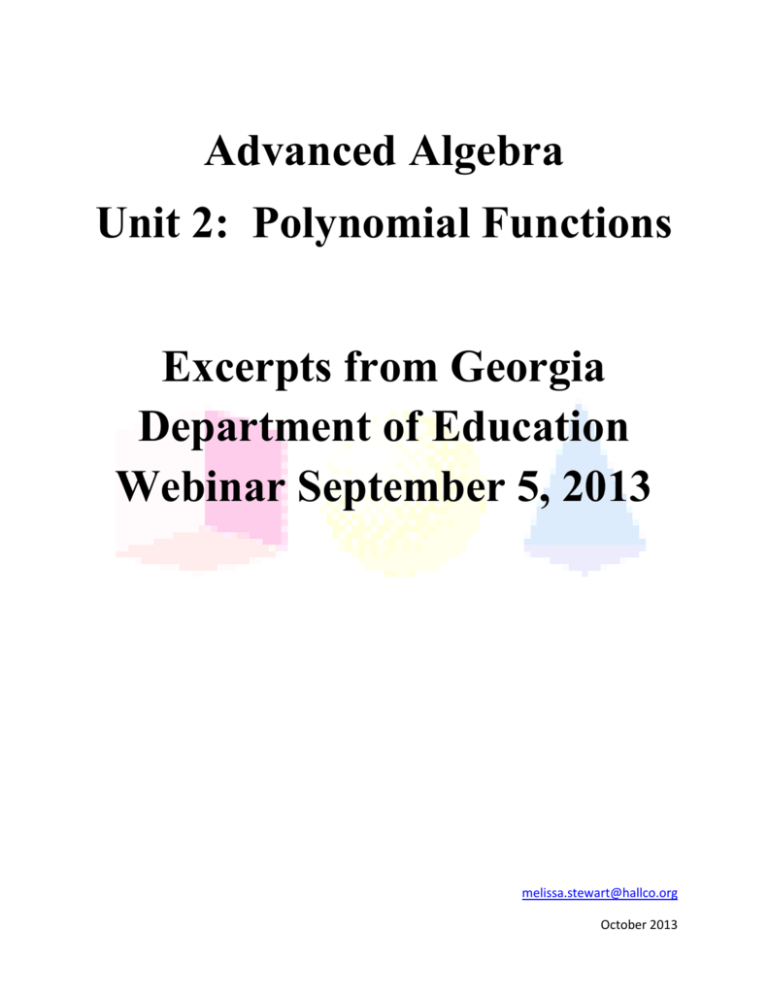
Advanced Algebra Unit 2: Polynomial Functions Excerpts from Georgia Department of Education Webinar September 5, 2013 melissa.stewart@hallco.org October 2013 Warm-Up Trina has a conjecture: “Pick any two integers, Look at the sum of their squares, the difference of their squares, and twice the product of the two integers you chose. Those three numbers are the sides of a right triangle.” Is the conjecture true, if so prove it, if not modify it to be true and show it is true. Solution: Let m and n be our positive integers. Show Show melissa.stewart@hallco.org October 2013 Therefore: melissa.stewart@hallco.org October 2013 What’s the main idea of Unit 2? • Use complex numbers in polynomial identities and equations. • Interpret the structure of expressions. • Write expressions in equivalent forms to solve problems. • Perform arithmetic operations on polynomials. • Understand the relationship between zeros and factors of polynomials. • Use polynomial identities to solve problems. • Solve systems of equations. • Represent and solve equations and inequalities graphically. • Analyze functions using different representation Concepts & Skills to Maintain from Previous Grades Combining like terms and simplifying expressions Long division The distributive property The zero property Properties of exponents Simplifying radicals with positive and negative radicands Factoring quadratic expressions Solving quadratic equations by factoring, taking square roots, using the quadratic formula and utilizing graphing calculator technology to finding zeros/ x-intercepts Observing symmetry, end-behaviors, and turning points (relative maxima and relative minima) on graphs Writing explicit and recursive formulas for geometric sequences Websites to help with the above: http://www.crctlessons.com/ www.aplusmath.com www.aaamath.com melissa.stewart@hallco.org October 2013 ENDURING UNDERSTANDINGS Viewing an expression as a result of operations on simpler expressions can sometimes clarify its underlying structure. Factoring and other forms of writing polynomials should be explored. The Fundamental Theorem of Algebra is not limited to what can be seen graphically; it applies to real and complex roots. Real and complex roots of higher degree polynomials can be found using the Factor Theorem, Remainder Theorem, Rational Root Theorem, and Fundamental Theorem of Algebra, incorporating complex and radical conjugates. A system of equations is not limited to linear equations; we can find the intersection between a line and a polynomial Asking when two functions have the same value for the same input leads to an equation; graphing the two functions allows for finding approximate solutions to the equation. melissa.stewart@hallco.org October 2013 Example: Suppose is a polynomial of degree If r is a real number such that Dividing where Substituting by show that is evenly divisible by gives: is a polynomial of degree and is a real number. we find: melissa.stewart@hallco.org October 2013 The student edition for Unit 2 can be found at https://www.georgiastandards.org/Common-Core/Pages/Math-9-12.aspx On the left side, please look under mathematics, Accelerated Geometry B/Advanced Algebra. Then, the right side has a pull-down menu to access the units. Additional parent guides will be posted to the parent resource page on http://www.hallco.org/boe/index.php (right hand menu) as they become available. melissa.stewart@hallco.org October 2013
